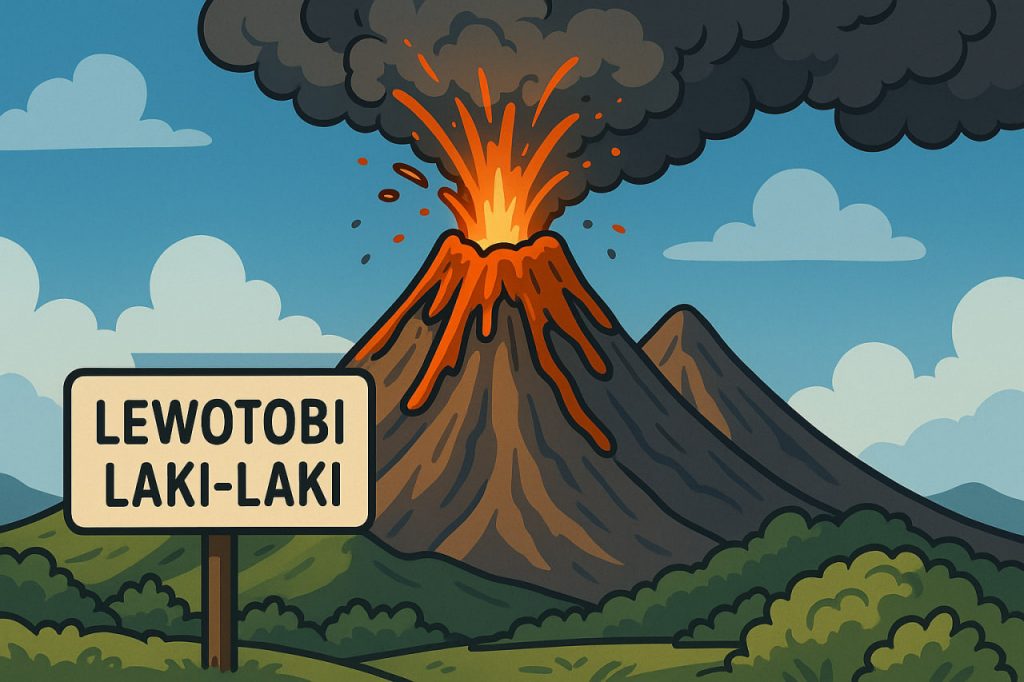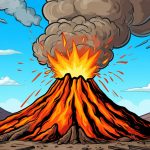Lewotobi Laki-Laki, part of the Lewotobi volcanic complex in East Flores, Indonesia, is one of the most striking twin volcanoes in Southeast Asia. Its name translates as “Lewotobi the Male” (with its neighboring peak, Lewotobi Perempuan, meaning “the Female”). This volcanic duo has long captured the attention of both locals and volcanologists due to their imposing presence and frequent activity.
The Lewotobi Laki-Laki volcano is a stratovolcano — a steep, conical structure built from layers of lava, ash, and rock. It rises dramatically over the island landscape and is known for moderate to explosive eruptions that can impact the surrounding region with ashfall and pyroclastic flows.
The 2023–2024 Eruption: What Happened?
In late 2023, Lewotobi Laki-Laki entered a new eruptive phase that continued into 2024. The eruption was characterized by volcanic tremors, plumes of ash reaching several kilometers into the atmosphere, and lava flows that descended from the summit. The Indonesian Center for Volcanology raised the alert level and issued evacuation orders for nearby communities.
The eruption disrupted local life significantly — schools were closed, flights were grounded due to ash clouds, and agricultural activity was halted. Ash covered crops and water sources, posing risks to both health and food security. Despite the damage, the event was less catastrophic than historic eruptions thanks to timely monitoring and early warnings.
Geological Background
Lewotobi Laki-Laki lies on the Pacific Ring of Fire, a seismically active zone where tectonic plates collide. The region is dotted with over 130 active volcanoes, making Indonesia the country with the most active volcanoes on Earth.
The lava from Lewotobi is typically andesitic, producing thick, sticky flows and explosive eruptions. This makes it important to maintain constant observation, as pressure can build up over time, resulting in sudden, violent outbursts.
Impact on Environment and Community
While volcanic eruptions are dangerous, they also play a role in shaping fertile landscapes. Over time, ash enriches the soil, boosting long-term agricultural productivity. However, short-term consequences include:
- Air pollution from ash and gases
- Respiratory and skin irritation among residents
- Damage to infrastructure and homes
- Forced displacement of local populations
Authorities and relief organizations provided emergency aid, evacuation shelters, and public health support during and after the 2023–2024 eruption.
Preparedness and Future Monitoring
Modern volcano monitoring systems — including seismographs, satellite imagery, and gas sensors — played a crucial role in minimizing casualties. Indonesian authorities have since expanded their early warning systems and community training programs to better prepare for future activity.
The Lewotobi volcanoes remain active and unpredictable, but continued research and preparedness efforts are helping mitigate risk for those who live in their shadow.
Glossary
- Stratovolcano – A tall, layered volcano built from alternating eruptions of lava and ash.
- Pyroclastic flow – A fast-moving, deadly mix of gas, ash, and volcanic rock.
- Andesitic lava – A type of lava with medium viscosity, associated with explosive eruptions.
- Pacific Ring of Fire – A major area in the Pacific Ocean where many earthquakes and volcanic eruptions occur.
- Evacuation order – An official instruction for people to leave an area due to imminent danger.


